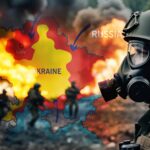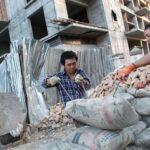- 0.3C warming could be averted by 2045 by reducing emissions by 45% this decade
- But scientists find 250 methane policies cover just 13% of emissions
- In Turkmenistan 29 emitters pumping over 1,800kg of methane per hour
- Landfill a super-emitter, with one Buenos Aires dump accounting for half urban emissions
May 31 – The World Meteorological Organization (WMO) recently confirmed what many had feared. By 2027, average global temperature rise will be more than 1.5 degrees Celsius above pre-industrial levels. We won’t permanently exceed 1.5C, but rather breach it on a temporary basis, and with increasing frequency. Despite government and company commitments to cut emissions, the chances of exceeding 1.5C of warming have increased steadily since 2015, when the WMO assessed it as close to zero.
That stark reality makes acting on methane – with 80 times more impact on warming than carbon dioxide over a 20-year horizon – even more urgent.
Indeed about 30% of the warming we’re experiencing is attributed to methane. According to the United Nations Environment Programme (UNEP) about 0.3C of global warming could be averted by 2045 by reducing emissions by 45% within this decade.
Policymakers have woken up to the damage methane is doing, but are their actions having an impact?
A team of European research scientists have reviewed more than 250 methane policies and find that they cover just 13% of emissions. And even then, it’s difficult to assess if policies are effective because emissions are largely estimated. The majority of policy instruments focus on reducing and preventing emissions, while only one in five aims to improve emission monitoring. Around half of policies target the fossil fuel sector, where technologies to prevent and remedy leaks are readily available.
The approach to assessing emissions is typically bottom-up, where they’re modelled or measured at a representative sample of individual emitters (for example, an oil well) and extrapolated. But studies show they’re usually inaccurate or underestimated, producing different results from satellite observation.
For example, bottom-up inventory data suggested China’s coal mine methane capturing regulations led to emissions falling 37% in the 10 years to 2019, whereas satellite data suggested they’d had no significant impact. Most recently, the Canadian government reported a 34% decrease in methane emissions from the oil and gas industry, compared with 2012. However, an independent audit found that large sources of emissions were unaccounted for and not covered by existing regulations.
Methane policies often don’t tackle the entire supply chain, with very few covering abandoned wells and mines. This is something that Europe is aiming to address with its first EU-wide methane legislation. Proposals were adopted in May in the European Parliament that will require companies to carry out regular leak detection and repair. MEPs want the rules to include the petrochemicals sector, and to extend to imports, which make up 80% of oil and gas consumed in the EU. Under their proposals, from 2026, importers would have to prove that they’re adhering to the same rules.
Maria Olczak, lead author of the methane policy report, suggests the EU proposals show an “understanding of the scope of the problem and forward-looking thinking”, as the regulation will also apply to infrastructure used for biogas and biomethane. Reported emissions will have to be verified, a policy element that has hitherto been hampered by inadequate measurement.
But the proposed legislation has some way to go before it’s finalised. Negotiations between the European Council, which watered down earlier proposals, the European Commission and EU Parliament now follow.
Implementation is another question. It would be up to individual member states, says Olczak, to decide if companies were following the regulations or not, and what type of penalties would be levied for non-compliance.
Europe still has to consider how to tackle its biggest source of methane emissions – from agriculture, the bulk of which come from digestion in grazing animals and management of livestock manure. A revision of the Industrial Emissions Directive is under way, but arguments centre on how large farms must be before they fall under the scope of legislation.
Globally, methane-curbing policies are missing from some of the world’s biggest emitters. China hasn’t signed up to the Global Methane Pledge, to cut emissions by 30% by 2030. It announced a draft reduction plan at COP27, but there’s been silence since.
Methane-intense oil and gas producer Turkmenistan offers an example of unintended policy consequences. Satellite monitoring suggests that a ban on flaring of gas, which is associated with oil production, led oil-well operators to vent it as methane into the atmosphere instead.
Ilse Aben’s team at SRON Netherlands Institute for Space Research has identified one of the world’s largest methane hotspots, on Turkmenistan’s west coast. They found 29 different emitters, each pumping out more than 1,800kg of methane per hour, emissions that might have been occurring for decades. Such super-emitter events don’t show up in national greenhouse gas inventories that countries report to the United Nations Framework Convention on Climate Change (UNFCCC) because they’re “totally abnormal”, says Aben. But they should be straightforward to fix, with equipment repairs (for example). U.S. secretary of state Anthony Blinken underlined the importance of tackling methane emissions when he met the foreign minister of Turkmenistan in April.
Unexpectedly, Aben and her colleagues also found super-emitters in the form of waste dumps and landfill. These are critical to tackle because they account for more than 10% of man-made methane emissions. In Buenos Aires alone, landfill accounted for half of urban emissions. To give an idea of the scale, that one Argentine landfill emits about 10% of the methane emitted by the largest oil-producing region (the Permian basin) in the U.S.
Policies in Europe and South Korea, for example, do tackle municipal solid waste, by banning direct landfilling of food waste.
Soon methane emitters will have nowhere to hide. Aben’s team is providing data UNEP’s International Methane Emissions Observatory (IMEO). It will integrate information from a wide array of sources to feed into its Methane Alert and Response System (MARS), which starts operating this summer.
“I’m really looking forward to action getting done,” says Aben, whose attempts to alert super-emitting facilities haven’t always had the desired effect. “Data will become public, not necessarily to name and shame, more it is supporting transparency. IMEO is not just going to wait for things to happen, it’s going to put (information) out there for everyone. And we need to have some sort of transparency and accountability because we need to reduce our emissions.”
Getting effective government and company action on that data can’t come soon enough.
Source: Reuters















